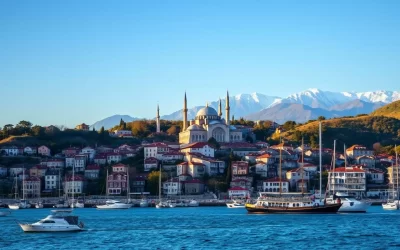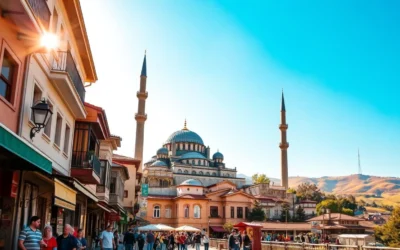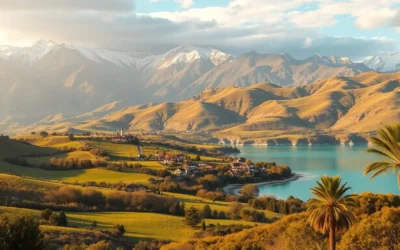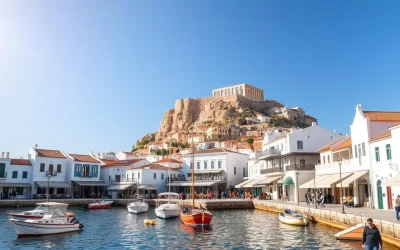✓ Accommodations✓ Flights✓ Rental Cars
Nestled in the southeastern region, the city of Mardin is a treasure trove of history and culture, boasting a unique blend of architectural styles that cascade down a hillside.
As you explore this enchanting destination, you’ll be captivated by the panoramic views of the Mesopotamian plains stretching to the horizon, creating a truly magical atmosphere.
The old city is a testament to Mardin’s rich cultural heritage, with its intricate stonework and golden-hued limestone architecture.
As you wander through the narrow streets, you’ll experience the warm hospitality of the locals and discover the city’s authentic charm.
This comprehensive guide will help you uncover the hidden gems and top attractions, ensuring that your visit to Mardin is an unforgettable experience.
Discovering the Magic of Mardin
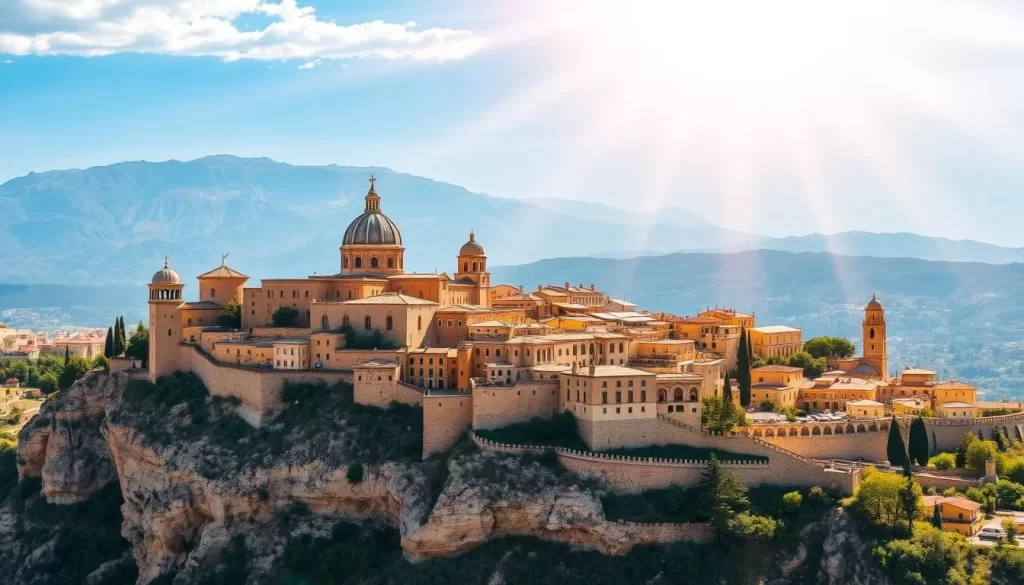
As you step into Mardin’s old city, the warm glow of golden limestone buildings immediately captures your senses. The stunning views of the Mesopotamian plains unfold before you, creating a breathtaking panorama that is quintessentially Mardin. The unique atmosphere of this ancient city is captivating, with its labyrinthine streets inviting you to explore and discover its many secrets.
Mardin’s strategic hilltop location has played a significant role in shaping its development over the centuries. This vantage point has not only preserved its unique character but also made it a melting pot of various cultures. As a result, the city’s architecture reflects a diverse heritage, with influences from the Artuqid, Ottoman, and other civilizations. The blend of these architectural styles is a testament to Mardin’s rich history and cultural significance.
Visiting Mardin is a distinct experience that differs from other Turkish destinations. The city’s Middle Eastern ambiance, coupled with its distinctive stone architecture, creates a unique charm that is hard to find elsewhere. Mardin is one of the most photogenic places to visit in Turkey, offering countless opportunities for stunning photography. The city’s appearance transforms throughout the day, from the golden morning light to the spectacular sunset views, making every moment a perfect shot.
Mardin’s old city is a place to slow down and savor, rather than rush through as a day trip. The city’s serene atmosphere and historic significance make it an ideal destination for travelers seeking a meaningful experience in Turkey. As you wander through the narrow streets of the city, you’ll discover the essence of Mardin, a place where history, culture, and natural beauty converge.
Where is Mardin? Location and Geography
Tucked away in southeastern Turkey, Mardin is a city that boasts a unique blend of cultures and geography. Located close to the Syrian border and approximately 120 miles from the border with Iraq, Mardin’s strategic position has contributed to its historical significance.
Mardin is divided into two distinct parts: Eski Mardin (Old City) perched on a hillside, and Yenişehir (New City) in the valley below. The old city’s position overlooking the vast Mesopotamian plains is of great geographical significance, contributing to its historical importance as a crossroads of trade routes and civilizations.
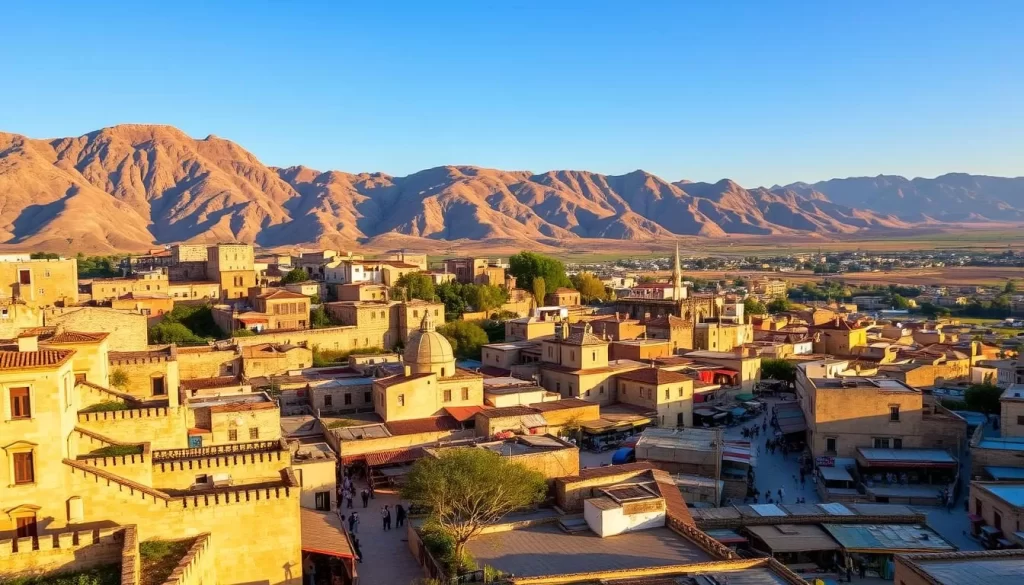
As the capital of a province with the same name in the southeastern region of Turkey, Mardin’s old city is featured on the UNESCO World Heritage Tentative List due to its historical and architectural significance. The area is characterized by a distinctive limestone ridge upon which the old city is built, providing natural protection and spectacular views. The unique terraced construction of the city, with buildings rising up the hillside, is a direct result of the geography of the area.
A Brief History of Mardin: From Ancient Times to Present
The history of Mardin is a complex narrative that spans thousands of years, shaped by the successive waves of different cultures and rulers. The city’s strategic location made it an attractive settlement for early civilizations, including the Sumerians, who were among its first known inhabitants.
As you delve into Mardin’s past, you’ll discover its significance as a center for Syriac Christianity by the 4th century. Some of the earliest monasteries were built in this region, underscoring Mardin’s importance in the religious landscape of the ancient world.
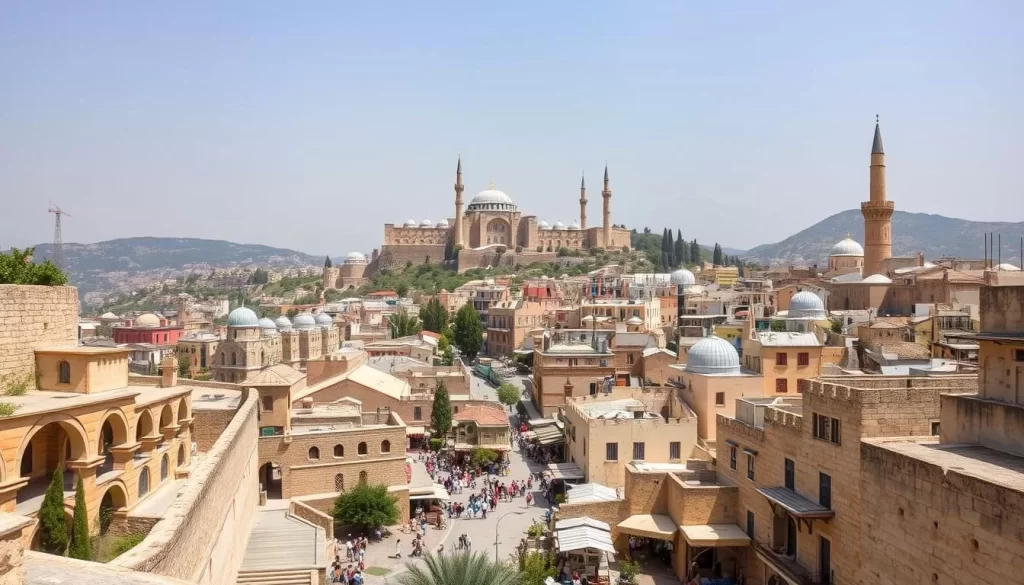
Mardin’s history is marked by the influence of various empires. It passed through Roman and Byzantine rule before being absorbed into the Umayyad Empire in the 6th century. The city’s architectural heritage was significantly shaped during the Artuqid period (12th-15th centuries), when many of its most famous buildings were constructed.
The Ottoman annexation in 1517 under Sultan Selim integrated Mardin into a vast Middle Eastern empire. Later, with the establishment of the Republic of Turkey in 1923, Mardin became a provincial capital, further cementing its status as a cultural and administrative hub.
Mardin’s history as a crossroads of civilizations has created a unique cultural blend and architectural heritage. The city’s ability to foster coexistence among different religious and ethnic groups has contributed to its cultural richness. Understanding Mardin’s history enhances your appreciation of its monuments and cultural significance, making it a fascinating destination for travelers interested in exploring the depths of this ancient city.
How to Get to Mardin
Getting to Mardin is simpler than you think, with multiple travel options available. Whether you’re traveling from within Turkey or from abroad, you can choose the way that suits you best.

Flying to Mardin Airport
The most convenient way to travel to Mardin is by air. Mardin Airport receives flights from major Turkish cities, making it easily accessible. You can book your flight to Mardin and enjoy a hassle-free journey.
Connections from Major Turkish Cities
If you prefer to travel by bus, Mardin is well-connected to major Turkish cities like Istanbul, Ankara, and Izmir. Several bus companies operate on these routes, offering comfortable and affordable travel options.
Driving to Mardin
For those who prefer to drive, Mardin is accessible via main highways connecting it to other parts of Turkey. The roads are generally in good condition, although the mountainous terrain requires careful driving. Renting a car provides the flexibility to explore Mardin and its surroundings at your own pace.
- Renting a car allows you to visit attractions outside the city center, such as monasteries and ancient ruins, with ease.
- The main highways connect Mardin to cities like Diyarbakir and Sanliurfa, making it a convenient drive.
- It’s advisable to check rental car options in advance, especially during peak tourist seasons.
Best Time to Visit Mardin
The continental climate of Mardin influences the best seasons to explore this historic city. Mardin experiences hot, dry summers and cold winters, making certain times of the year more favorable for visiting than others.
Spring (April-May) and autumn (September-October) are considered the ideal seasons to visit Mardin. During these periods, the temperatures are pleasant, and the skies are generally clear, making them perfect for photography and exploring the city’s outdoor attractions.
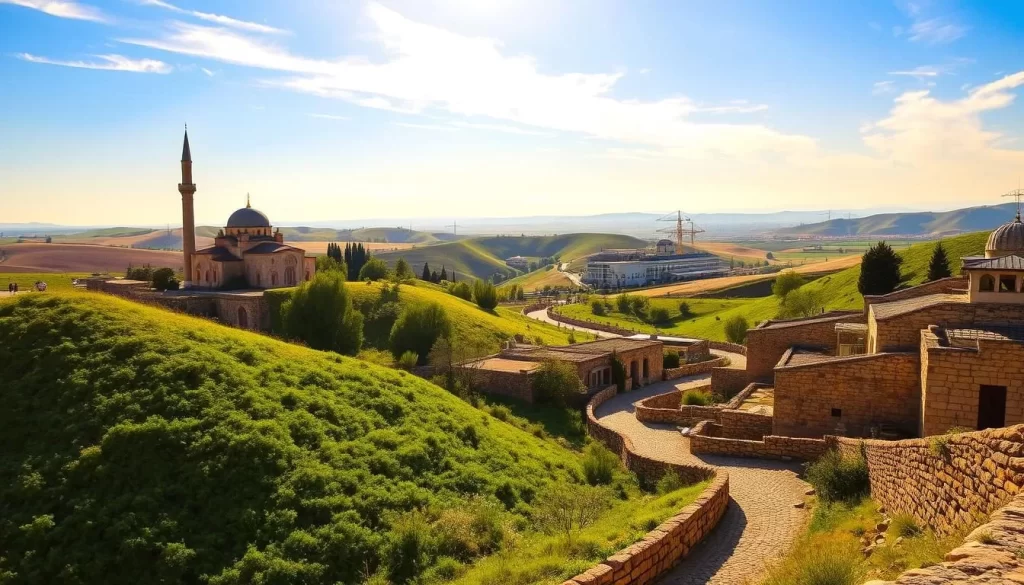
While summer can be quite hot, with temperatures soaring above 40°C (104°F), making midday sightseeing uncomfortable, winter brings cold temperatures that can drop below freezing. However, Mardin looks particularly magical when it’s occasionally dusted with snow.
You should plan to spend at least 3-4 days in Mardin to fully appreciate the city and its surroundings. It’s also worth noting that weekends can be busier due to domestic tourists, so a weekday visit might offer a more relaxed experience. If you’re interested in hearing the atmospheric call to prayer, check the prayer times to plan your day accordingly.
Additionally, consider the seasonal festivals and events, such as the Bulgur Festival in November, when planning your trip. It’s also advisable to book your accommodations well in advance, especially during Turkish holiday periods when the city gets particularly crowded.
Exploring Mardin’s Old City
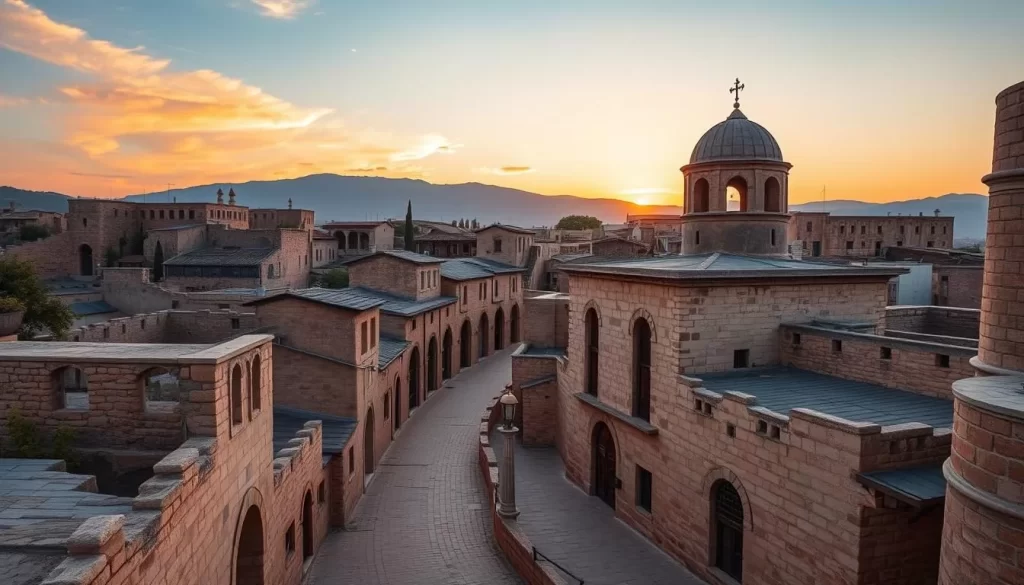
The charm of Mardin’s Old City lies in its intricate stonework, historic landmarks, and panoramic views of the Mesopotamian plains. As you explore this ancient part of the city, you’ll be struck by the unique blend of cultures and architectural styles that define Mardin.
Walking the Labyrinth of Historic Streets
Walking through Mardin’s Old City is like navigating a labyrinth of historic streets, each with its own story to tell. The narrow pathways are lined with ancient buildings, some of which date back centuries, offering a glimpse into the city’s rich past. As you wander, take in the intricate details of the architecture and the vibrant atmosphere that pervades the area.
Admiring the Artuqid Architecture
Mardin’s Old City is renowned for its Artuqid architecture, a style that reflects the city’s historical significance as a crossroads of cultures. The buildings from this period are characterized by their use of local stone and intricate carvings, showcasing the craftsmanship of the era. As you explore, look out for examples of this architecture and appreciate the beauty and historical value they bring to the city.
Best Viewpoints in Mardin Old City
One of the highlights of visiting Mardin’s Old City is the opportunity to take in the breathtaking views from its various viewpoints. Zinciriye Medresesi’s rooftop is particularly noteworthy, offering spectacular vistas of the surrounding plains. For the best experience, visit different viewpoints at various times of day to capture the changing light conditions, especially during sunset. Don’t forget your camera with a wide-angle lens to capture the expansive views stretching to the horizon.
As you explore Mardin’s Old City, remember to look out for less-known viewpoints that offer similar views but with fewer tourists. The changing weather conditions also provide a unique perspective, with particularly clear visibility after rainfall, making each visit potentially different from the last.
Must-Visit Religious Sites in Mardin
As you explore Mardin, you’ll discover a multitude of religious landmarks that highlight the city’s unique blend of faiths. Mardin’s rich spiritual heritage is reflected in its numerous mosques, monasteries, and churches, each telling a story of the city’s complex history and cultural diversity.
Ulu Cami (Grand Mosque)
The Ulu Cami, or Grand Mosque, is one of the most significant religious sites in Mardin. This historic mosque, with its striking architecture, serves as a central place of worship for the local Muslim community. Visitors can admire its intricate stonework and serene atmosphere, making it a must-visit site when in Mardin.
Deyrulzafaran Monastery (Mor Hananyo)
Located just outside Mardin, the Deyrulzafaran Monastery, also known as Mor Hananyo, is a vital Syriac Orthodox site. This ancient monastery, with its rich history dating back to the 5th century, is not only a place of spiritual significance but also a testament to the region’s cultural heritage. The monastery’s name, which translates to “Saffron Monastery,” is derived from the saffron-colored stones used in its construction.
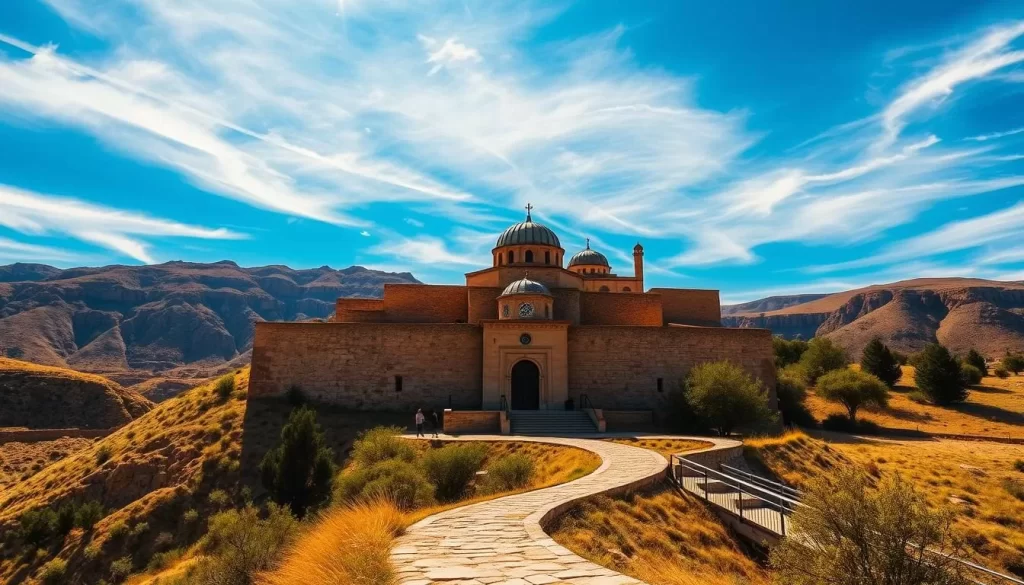
Church of the Forty Martyrs
The Church of the Forty Martyrs is another significant religious site in Mardin’s Old City. Named after forty Roman soldiers who were martyred in 320 CE for refusing to renounce their Christian faith, this Syriac Orthodox church is renowned for its distinctive stone facade and beautiful interior adorned with icons and religious artifacts. The church continues to serve the local Syriac Christian community, holding regular services. Visitors are welcome to explore this historic church, but it’s advisable to visit during non-service times to avoid disrupting worship. Respectful behavior is paramount, as this is an active place of worship.
- The church is a significant cultural and religious landmark.
- It represents the continued presence of Christianity in a predominantly Muslim region.
- Visitors can admire its architecture and historical significance.
Mardin’s religious sites, including the Ulu Cami, Deyrulzafaran Monastery, and the Church of the Forty Martyrs, offer a glimpse into the city’s rich spiritual tapestry. Each site is a testament to the city’s history and its people’s diverse faiths, making Mardin a fascinating destination for those interested in religious and cultural heritage.
Mardin’s Historic Madrasas and Buildings
As you wander through Mardin, you’ll discover a wealth of historic madrasas and architectural gems that reflect the city’s rich cultural heritage. The old city is home to numerous significant structures, each with its own unique history and architectural style.
Zinciriye Medresesi
The Zinciriye Medresesi is one of Mardin’s most notable madrasas, showcasing the city’s historical commitment to education and Islamic scholarship. Built during the Artuqid period, this madrasa is characterized by its intricate stonework and beautiful courtyard. Visitors can explore the complex, taking in the serene atmosphere and admiring the architectural details.
Kasımiye Medresesi
Another significant educational institution in Mardin is the Kasımiye Medresesi, constructed in the 16th century. This madrasa is renowned for its stunning architecture, which blends traditional Islamic elements with local Artuqid styles. The building’s design and construction reflect the era’s emphasis on knowledge and learning.
Mardin’s Old Post Office
Mardin’s Old Post Office is one of the city’s most photogenic buildings, designed by the renowned Armenian architect Sarkis Elyas Lole in 1890. Originally built as a residence for the Şatana family, it became a post office in 1950. The building is notable for its stunning double staircase at the entrance and the terrace that offers breathtaking views over the Şehidiye Mosque and the surrounding plains.
The intricate patterned stonework around doorways, windows, and niches showcases Lole’s signature blend of Islamic, European Renaissance, and Gothic styles. This architectural masterpiece has gained popularity as a filming location for Turkish TV series and Netflix’s “The Gift.” Visitors can explore the building for an entrance fee of 20TL, and a small section still functions as a working post office.
| Building | Year Built | Architectural Style |
|---|---|---|
| Zinciriye Medresesi | Artuqid Period | Islamic/Artuqid |
| Kasımiye Medresesi | 16th Century | Islamic/Artuqid |
| Mardin’s Old Post Office | 1890 | Islamic/European Renaissance/Gothic |
Day Trips from Mardin
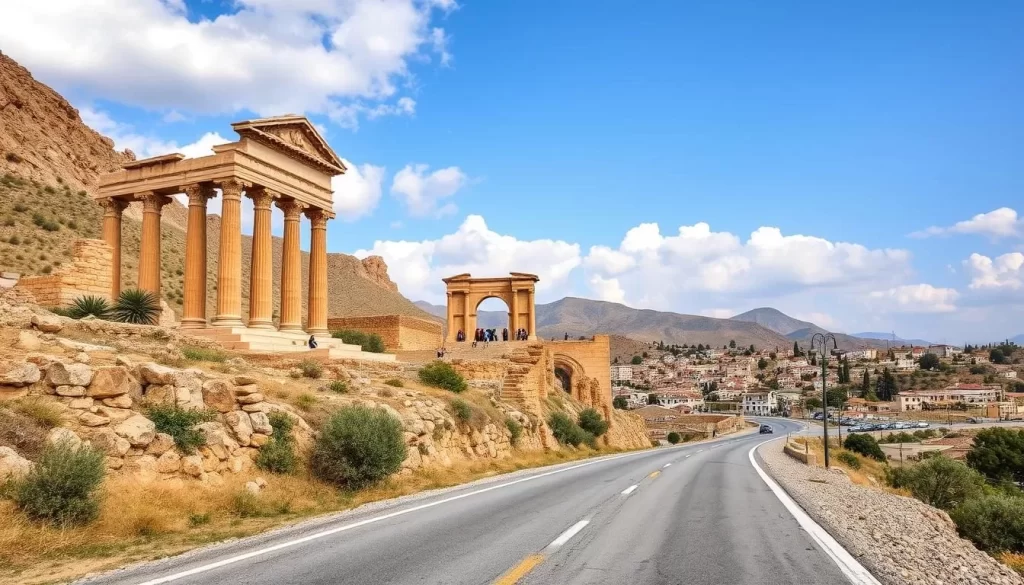
Mardin’s strategic location makes it an ideal base for exploring the ancient sites and towns of southeastern Turkey. The region is rich in history, with numerous attractions that can be visited on a day trip.
Exploring the Ancient City of Dara
Dara, an ancient city located near the modern-day town of Oğuz, is a fascinating day trip destination. Founded in the 6th century, Dara was once a crucial stronghold in the Byzantine Empire. Today, visitors can explore the remains of this ancient city, including its impressive fortifications and historical ruins.
Visiting Midyat
Midyat, a town known for its Syriac heritage, is another excellent day trip option from Mardin. The town is famous for its traditional stone houses, historic churches, and vibrant culture. Visitors can explore the town’s narrow streets, visit its historic sites, and experience the local cuisine.
Mor Gabriel Monastery
Mor Gabriel Monastery, founded in 397 CE, is one of the oldest functioning Christian monasteries in the world. It holds significant importance to the Syriac Orthodox Church and has played a crucial role in preserving the Syriac language and culture. The monastery’s architecture is characterized by its ancient stone walls, courtyards, and religious artifacts. Visitors are required to dress modestly and behave respectfully. The monastery continues to function as a religious institution with a small community of monks and nuns. Notably, Mor Gabriel Monastery offers a different experience compared to the Mor Hananyo Monastery (Deyrulzafaran) near Mardin, making it a unique day trip destination that can be combined with a visit to Midyat.
Mardin, Turkey: Best Things to Do for Food Lovers
For food lovers, Mardin is a paradise, with a variety of local delicacies and traditional beverages to savor. The city’s culinary scene is a rich tapestry woven from its cultural heritage and geographical location.
Local Delicacies to Try
Mardin’s cuisine is characterized by its use of fresh ingredients and traditional recipes. You should try kebabs, which are flavorful and cooked to perfection. Another local favorite is dolma, stuffed vegetables that are a delight to the taste buds. Don’t miss the opportunity to taste the local pastries and desserts, which are sweet and divine.
Sampling Assyrian Wine
Mardin is known for its Assyrian wine, which is produced using traditional methods. You can visit local wineries to sample different varieties and learn about the wine-making process. Assyrian wine is a reflection of the region’s rich cultural heritage and is definitely worth trying.
Coffee Culture: Trying Mırra Coffee
Mırra coffee is a specialty of southeastern Turkey, known for its thick, dark, and extremely bitter taste. It’s not for the faint-hearted! The coffee beans are roasted twice to increase bitterness, then repeatedly boiled until they become syrupy with foam on top. Traditionally, Mırra coffee is served in small cups and is drunk in two or three sips before returning the cup to the server. There’s an amusing tradition associated with Mırra coffee: if you place the cup on the floor or fail to return it, you’re expected to fill it with gold and either marry the server or help them find a spouse. Mırra coffee is distinct from traditional Turkish coffee, with differences in preparation and taste. You can experience authentic Mırra coffee at local cafes in Mardin, where the coffee culture is alive and vibrant. Enjoy the unique flavor and the traditional serving ritual, making your coffee experience in Mardin truly memorable.
Shopping in Mardin
Shopping in Mardin is an adventure that combines traditional craftsmanship with modern flair. As you explore the city’s historic streets, you’ll find a variety of unique souvenirs and local products that reflect the region’s rich cultural heritage.
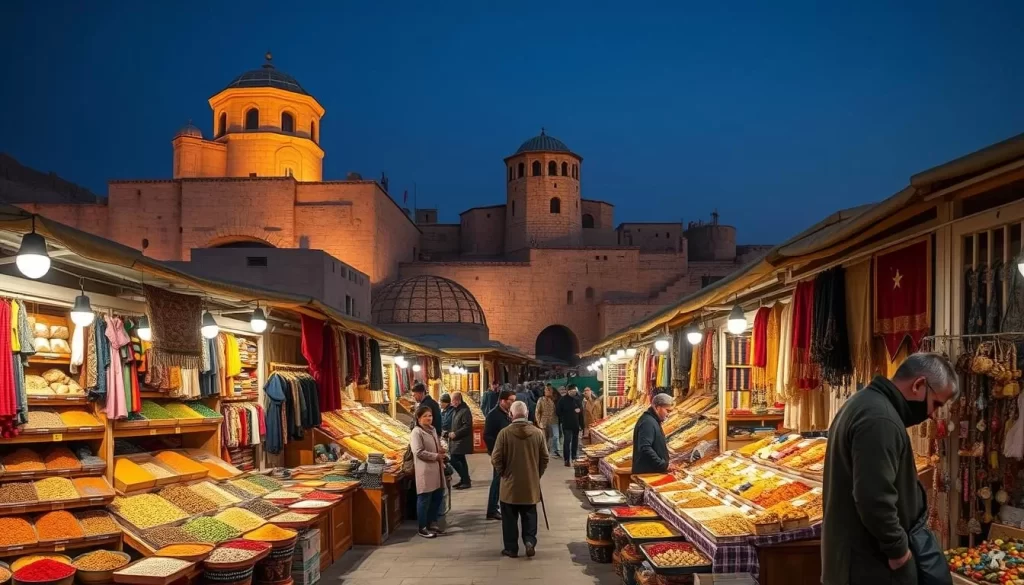
Exploring the Old Bazaar
The Old Bazaar in Mardin is a must-visit destination for any shopper. Here, you can find a wide range of local goods, from intricate silver and gold jewelry made using the traditional telkari (filigree) technique to handmade textiles and local spices. The bazaar is a treasure trove of unique souvenirs that showcase the region’s craftsmanship.
Artisanal Soaps and Local Crafts
Mardin is also known for its artisanal soaps and local crafts, which make for great souvenirs. You can find a variety of handmade soaps and crafts in the shops along the main street, each offering slightly different selections and quality levels. Be sure to explore and compare the different offerings.
Jewelry and Traditional Items
In addition to telkari jewelry, Mardin’s shops offer other distinctive jewelry styles influenced by the area’s diverse cultural heritage, combining Turkish, Kurdish, and Assyrian designs. You can also find traditional items like copper coffee sets and handmade textiles that make for meaningful souvenirs. While bargaining is expected, many shops have fixed prices for convenience.
As you shop, don’t forget to visit the nut shops that offer unlimited samples of local treats and chocolates, perfect for stocking up on snacks. With its unique blend of traditional and modern shopping experiences, Mardin is a shopper’s paradise.
Where to Stay in Mardin

Choosing where to stay in Mardin can be as exciting as exploring the city itself, with options ranging from historic mansions to modern hotels. Mardin’s diverse accommodations cater to various preferences and budgets, ensuring that your stay is as memorable as your experiences in this historic city.
Luxury Accommodations in Historic Buildings
Mardin offers luxurious stays in historic buildings that have been meticulously restored to retain their original charm while providing modern comforts. These historic hotels are not just places to stay; they are experiences that immerse you in the city’s rich history. You can spend your days exploring the city and return to the tranquility of these beautifully restored mansions.
Mid-Range Options
For travelers seeking a balance between comfort and affordability, Mardin’s mid-range hotels are an excellent choice. These hotels often offer a blend of traditional architecture and modern amenities, making your stay in this part of Turkey both enjoyable and convenient.
Budget-Friendly Stays
Budget-conscious travelers can also experience the beauty of Mardin without breaking the bank. Options like Dara Konagı, rated 7.5/10, offer a chance to stay in the historic part of the city. While budget accommodations may be simpler, they still allow you to soak up the city’s atmosphere. You can stay for a few more days and explore Mardin at a leisurely pace.
It’s worth considering guesthouses and smaller hotels that might not be listed on major booking platforms but offer good value. However, some budget accommodations may be located in the new city, requiring you to arrange transportation to visit the old city’s attractions. Booking in advance is advisable, especially during Turkish holiday periods when availability becomes limited.
Practical Tips for Visiting Mardin
As you prepare for your trip to Mardin, here are some practical tips to enhance your travel experience. Mardin is a city that richly rewards respectful and prepared visitors.
Safety in Mardin
Mardin is generally considered safe for tourists. The city has a relaxed atmosphere, and with normal precautions, you can have a trouble-free visit. Be mindful of your belongings, especially in crowded areas, and avoid traveling alone at night.
Navigating Mardin
Getting around Mardin is relatively straightforward. The old city is best explored on foot, allowing you to soak in the historic atmosphere. For longer distances, taxis and local buses are readily available. You may also consider renting a car to explore surrounding areas.
Cultural Etiquette
Respecting local customs is key to a harmonious visit. Here are some cultural tips to keep in mind:
- Dress modestly, especially when visiting religious sites. Both men and women should cover their shoulders and knees, and women are advised to wear a headscarf when entering mosques.
- Remove your shoes before entering mosques and some traditional homes as a sign of respect.
- Learning a few basic Turkish phrases can go a long way in connecting with locals, who appreciate the effort visitors make to communicate in their language.
- While photography is generally welcomed, it’s polite to ask permission before taking pictures of people, particularly in more traditional areas.
- Mardin is known for its warm hospitality, and you may be invited for tea or coffee by friendly locals. Embracing these moments can enrich your travel experience.
By being mindful of these cultural nuances, you can ensure a respectful and enjoyable visit to Mardin. The city’s relaxed nature, combined with your consideration for local customs, will make your trip truly memorable.
Best Photography Spots in Mardin
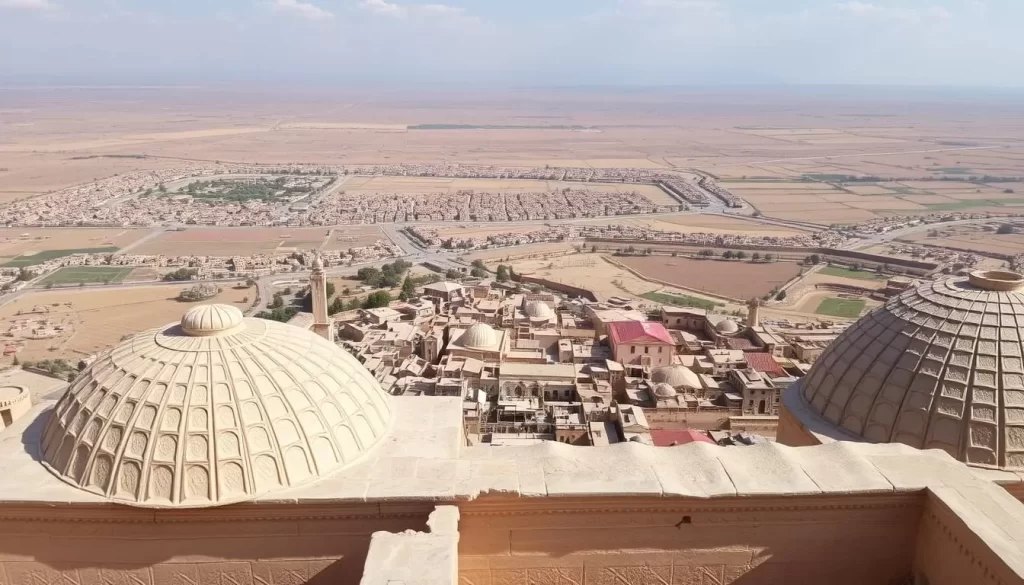
With its unique blend of cultures and stunning architecture, Mardin is a photographer’s dream destination. The city’s golden stone buildings, dramatic landscapes, and unique light conditions make it an ideal location for capturing breathtaking photographs.
The rooftop of Zinciriye Medresesi is one of the best spots for panoramic views over the Mardin old city and the plains of Mesopotamia. Visiting the terraces of cafes and restaurants along the main ridge offers spectacular sunset photography opportunities.
The Old Post Office, with its ornate double staircase, is a popular spot for architectural photography. Walking outside the city for about 20-30 minutes allows you to capture the entire hillside view of Mardin cascading down the slope.
For the best results, visit key sites during early morning or late afternoon when the golden light enhances the yellow limestone buildings. The narrow alleys of the old city, with their interesting light patterns, arched doorways, and stone carvings, are perfect for atmospheric street photography.
Don’t forget to bring a wide-angle lens to capture the expansive views and a zoom lens for architectural details. Be patient when photographing popular spots, as they are frequently used by wedding photographers and tourist groups.
Conclusion: Why Mardin Should Be on Your Turkey Itinerary
In the realm of Turkish tourism, Mardin emerges as a distinct and captivating destination that weaves together the threads of history, culture, and natural beauty. Mardin’s unique appeal lies in its stunning architecture, rich history, and breathtaking views over the Mesopotamian plains, offering a different travel experience from more touristy destinations in western Turkey.
The city’s blend of Turkish, Kurdish, Arabic, and Assyrian influences creates a unique cultural landscape. Top things to do in Mardin include exploring the labyrinthine old city, visiting ancient religious sites, sampling local cuisine including distinctive wine and Turkish coffee, and interacting with welcoming locals.
To fully appreciate Mardin’s charms, it deserves at least 3-4 days on your Turkey itinerary. While getting to Mardin might require an extra flight or long bus trip, the journey is well worth it for travelers seeking authentic experiences. Mardin’s position at the crossroads of civilizations has created a cultural landscape that continues to evolve while preserving its heritage.
Many visitors find themselves extending their stay or planning return trips, as Mardin has a way of capturing hearts with its magical atmosphere. Mardin represents the best of Turkey’s diverse cultural heritage and warm hospitality, making it an essential part of any comprehensive exploration of the country. We encourage you to visit soon and experience this enchanting city.
The above is subject to change.
Check back often to TRAVEL.COM for the latest travel tips and deals.

